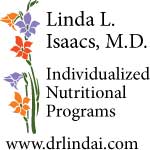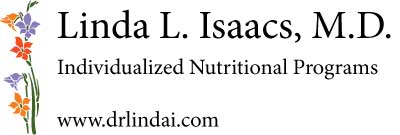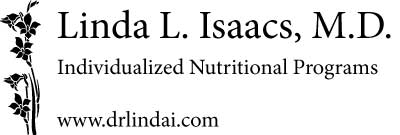Adjuvant Therapy—What Is It?
After cancer has been surgically removed, oncologists may recommend that the patient should get additional treatment to prevent a recurrence. This is called adjuvant therapy, adjuvant meaning “serving to aid or contribute;”. The goal of adjuvant therapy is to improve the efficacy of the primary treatment.
Without surgery, localized cancers such as breast or colon cancer will progress and spread. But surgery does not guarantee a cure. Cancer cells may have already traveled to other parts of the body, but they are so small that pre-operative testing cannot pick it up. The goal of adjuvant therapy is to kill these remaining cells before they grow.
The dilemma is that it is impossible to know for sure which patients still have residual disease that is too small to detect. Some patients receive treatment that they do not need. Meanwhile, others will have recurrences because the adjuvant treatment failed to kill the remaining cells.
Articles about adjuvant therapy can be confusing to read, because the results are typically presented to make it look as good as possible. As an example of this, in one study, gemcitabine after surgery for pancreatic cancer was found to double the rate of five-year survival. But the findings could also be expressed as follows: in the group that received no adjuvant therapy, 10.4% were alive at five years. In the group that received gemcitabine, 20.7% were alive at five years. (Oettle et al., 2013)
If 1000 such patients were treated, 104 would get treatment they did not need, and 793 would die within five years despite the treatment. 103 of 1000 would benefit, but all 1000 would encounter the side effects and expenses of treatment. Regardless of whether this makes adjuvant treatment in this situation worth it, 103 of 1000 (10.3%) benefiting does not sound as impressive as doubling the rate of five-year survival.
Adjuvant therapy is frequently recommended for breast cancer. Over the years, researchers have tried to improve estimates of the risk of recurrence and clarify when adjuvant therapy is useful. The size of the tumor, the number of involved lymph nodes, the presence of receptors for hormones or HER2, and other factors can give information about the likelihood of residual disease.
Treatment may include radiation, chemotherapy, or hormone blockade; each of these comes with risks of its own. For example, radiation to the left side of the chest can affect the heart, as can some kinds of chemotherapy. And most women with early stage breast cancer that has been surgically removed do not die of breast cancer; they die of heart disease. (Mehta et al., 2018)
Ideally, patients would be given clear information about the risks of adjuvant treatment and their own risks of recurrence, based on the characteristics of their cancers, so that they can decide what to do. That information would describe how many women such as themselves would have a recurrence if they did not get adjuvant therapy, and how many would have a recurrence even if they got the adjuvant therapy.
Based on what I hear from patients, as well as the results of studies on this topic, oncologists are more likely to present a short description of the risks and benefits, assuming that patients will agree. (Engelhardt et al., 2016; Kunneman et al., 2016) They may communicate this way because they believe patients will want to proceed even if the benefit is small. (Duric et al., 2005; Ravdin, Siminoff, & Harvey, 1998)
If you want to have a voice in this treatment decision, you may need to find information yourself. Various prediction tools can be found online. Here is one for breast cancer: www.predict.nhs.uk/patients.html
Some oncologists argue that such tools cannot keep up with the progress that has been made with more targeted therapies, decreased toxicity of radiation with more precise administration, etc. But tools can give you an idea of what your risk of recurrence would be without treatment, and while advances in treatment have been made, they are typically not terribly dramatic.
Finally, patients frequently ask me whether this therapy can take the place of adjuvant therapy. This is an unanswerable question. The data supporting the use of adjuvant therapy required very large groups of patients to show results that were statistically significant, because the amount of benefit is small. No private practice can generate meaningful data on this topic. Patients should make up their minds about whether to proceed with adjuvant therapy based on the risks and benefits of that therapy alone.
Reference List
Duric VM, Stockler MR, Heritier S, et al. Patients' preferences for adjuvant chemotherapy in early breast cancer: what makes AC and CMF worthwhile now? Ann Oncol. 2005;16(11):1786-1794. Abstract available at https://www.ncbi.nlm.nih.gov/pubmed/16126738
Engelhardt EG, Pieterse AH, van der Hout A, et al. Use of implicit persuasion in decision making about adjuvant cancer treatment: A potential barrier to shared decision making. Eur J Cancer. 2016;66:55-66. Abstract available at https://www.ncbi.nlm.nih.gov/pubmed/27525573
Kunneman M, Engelhardt EG, Ten Hove FL, et al. Deciding about (neo-)adjuvant rectal and breast cancer treatment: Missed opportunities for shared decision making. Acta Oncol. 2016;55(2):134-139. Abstract available at https://www.ncbi.nlm.nih.gov/pubmed/26237738
Mehta LS, Watson KE, Barac A, et al. Cardiovascular Disease and Breast Cancer: Where These Entities Intersect: A Scientific Statement From the American Heart Association. Circulation. 2018;137(8):e30-e66. Abstract available at https://www.ncbi.nlm.nih.gov/pubmed/29437116
Oettle H, Neuhaus P, Hochhaus A, et al. Adjuvant chemotherapy with gemcitabine and long-term outcomes among patients with resected pancreatic cancer: the CONKO-001 randomized trial. JAMA. 2013;310(14):1473-1481. Abstract available ahttps://www.ncbi.nlm.nih.gov/pubmed/24104372
Ravdin PM, Siminoff IA, Harvey JA. Survey of breast cancer patients concerning their knowledge and expectations of adjuvant therapy. J Clin Oncol. 1998;16(2):515-521. Abstract available at https://www.ncbi.nlm.nih.gov/pubmed/9469335




